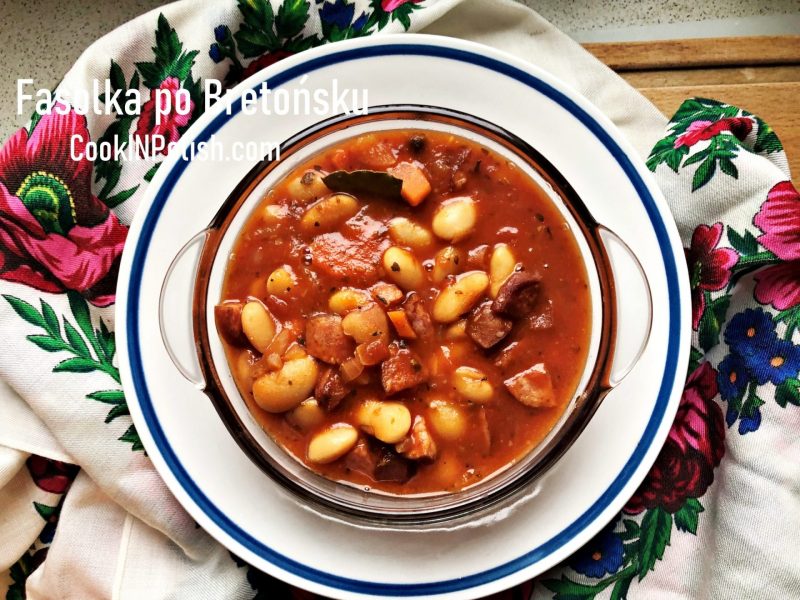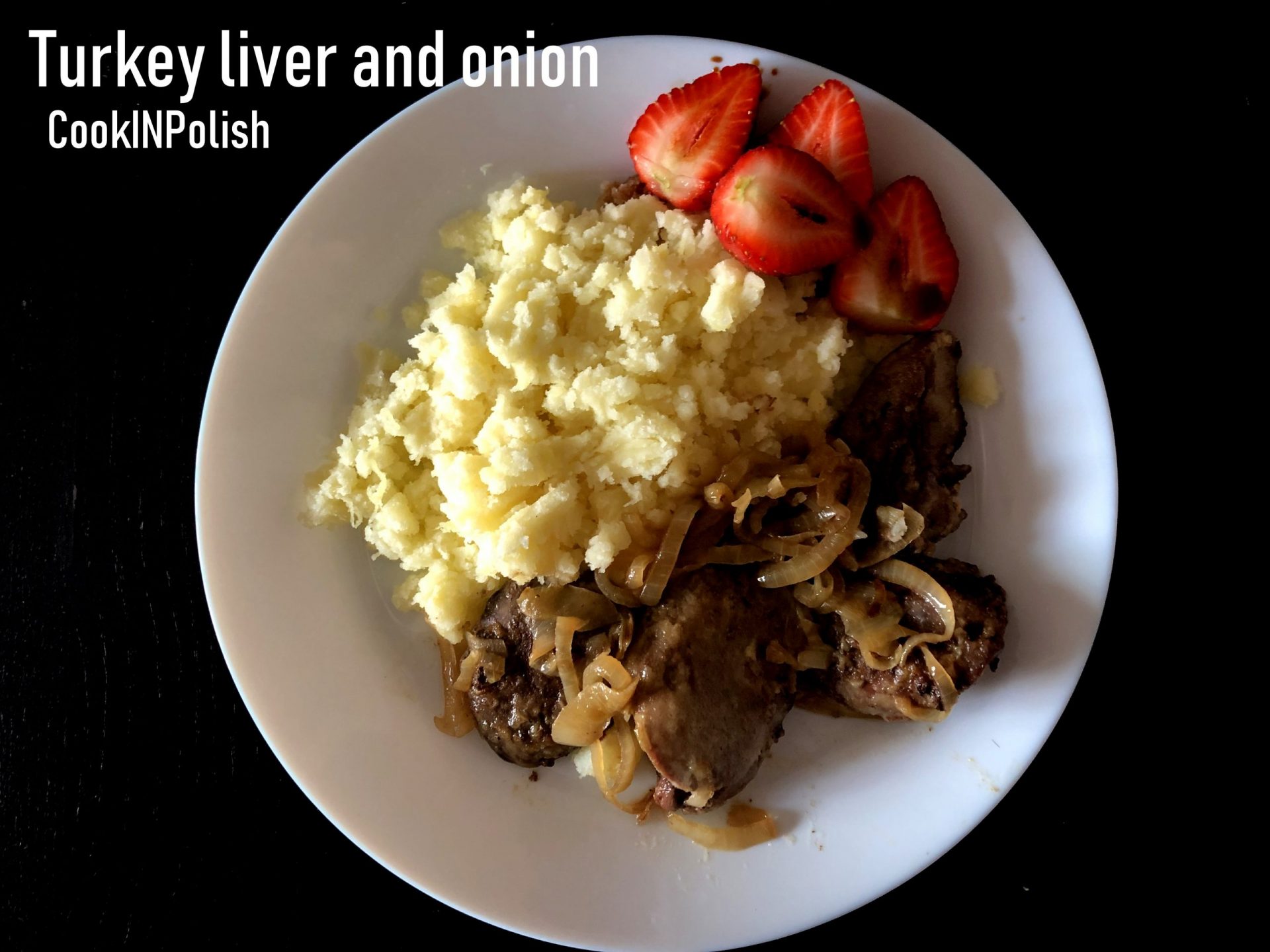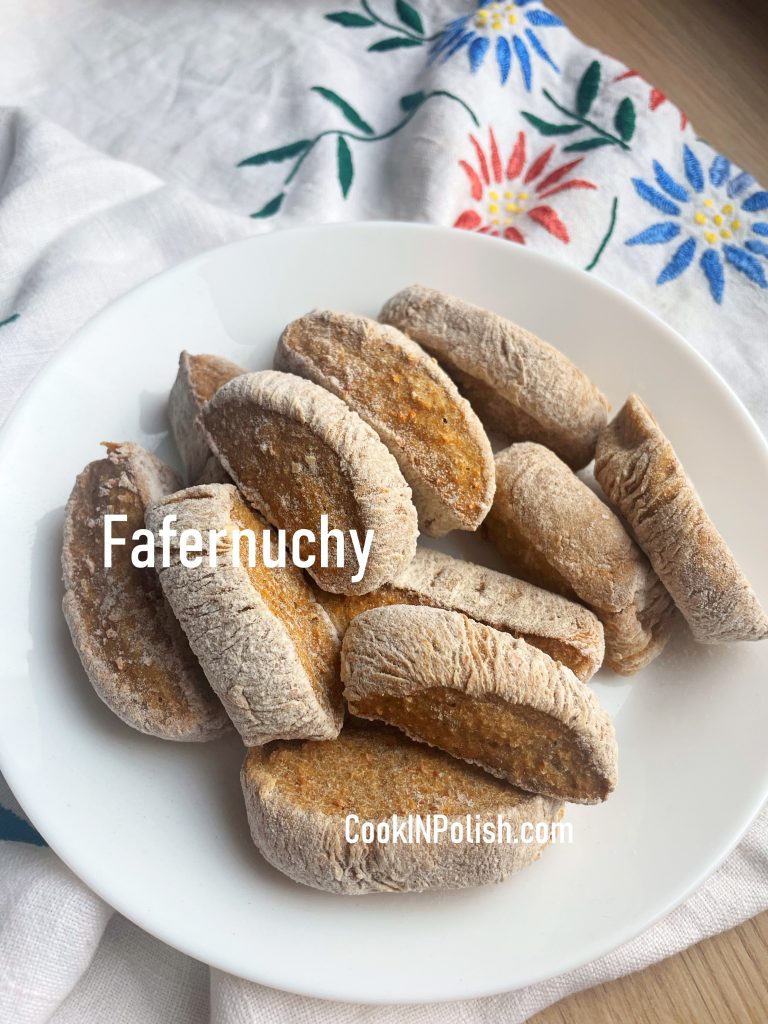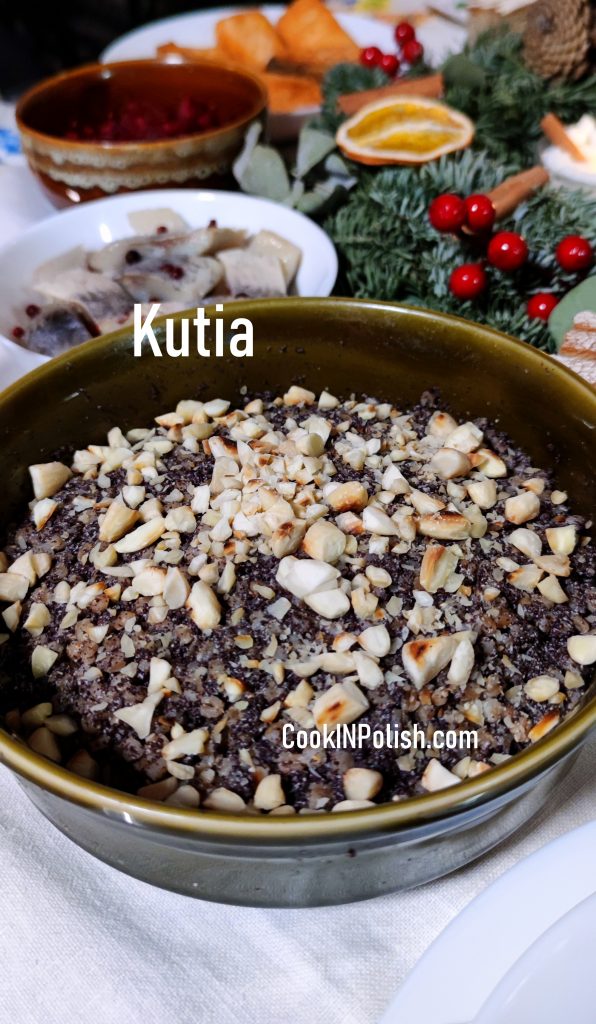The best time to make traditional Kapusta Kiszona – Sauerkraut for the winter is in the fall, but you don’t have to wait that long to enjoy it. You can easily prepare a fresh batch to enjoy right now, packed with the goodness of cabbage, a touch of carrot, and aromatic caraway seeds. Sauerkraut isn’t just delicious and refreshing; it’s also incredibly healthy. Rich in vitamins C, K, and B6, as well as probiotics, it supports digestion and strengthens the immune system. The fermentation process not only enhances the flavor but also boosts the nutritional value, making sauerkraut a powerhouse of nutrients. It’s a fantastic way to add a healthy, tangy crunch to your meals and take care of your gut health at the same time.
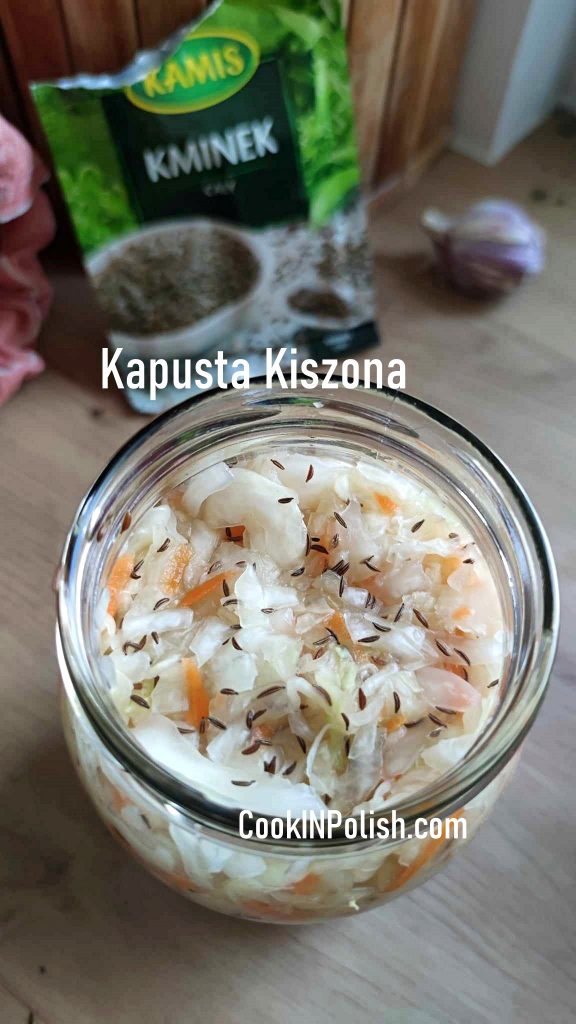
As an Amazon Associate, I earn from qualifying purchases.
Ingredients:
- 1 medium head of white cabbage (about 1.5 kg)
- 1 medium carrot, peeled and grated
- 1 tablespoon salt (non-iodized)
- 1 teaspoon caraway seeds (optional)
Here is a short video on how I make Kapusta Kiszona – Sauerkraut:
Instructions to prepare Kapusta Kiszona – Sauerkraut :
- Prepare the cabbage: Remove the outer leaves of the cabbage and discard them. Cut the cabbage into quarters and remove the core. Slice the cabbage thinly or shred it using a mandoline or food processor.
- Combine ingredients: In a large mixing bowl, combine the shredded cabbage, grated carrot, and caraway seeds. Sprinkle the salt over the mixture.
- Massage the cabbage: With clean hands, massage the cabbage mixture for about 5-10 minutes. As you massage, the cabbage will release its natural juices, creating a brine. The cabbage should become soft and slightly translucent.
- Pack into a jar: Transfer the cabbage mixture into a clean, sterilized jar or a fermentation crock. Pack it down tightly to remove any air pockets, ensuring that the cabbage is submerged in its own brine. If there isn’t enough liquid, you can add a little salted water (1 teaspoon of salt dissolved in 1 cup of water) to cover the cabbage. Cover the jar loosely with a lid to allow gases to escape during fermentation.
- Fermentation: Leave the jar at room temperature (18-22°C or 65-72°F) for about 5-7 days. Check the sauerkraut daily to ensure the cabbage stays submerged in the brine and remove any scum that may form on the surface.
- Taste and store: After about a week, taste the sauerkraut. If it’s tangy enough for your liking, it’s ready. If you prefer a stronger flavor, let it ferment for a few more days. Once it’s done, transfer the sauerkraut to the refrigerator, where it will keep for several months.
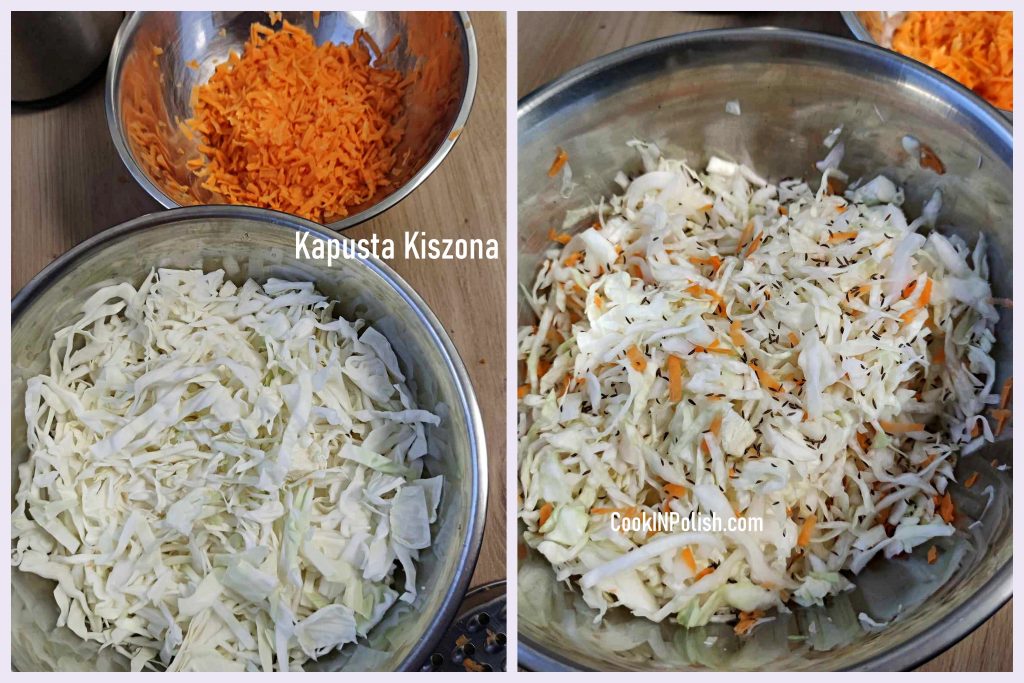
What cabbage to choose for the best Kapusta Kiszona – Sauerkraut?
The best cabbage for fermenting is white cabbage with tightly packed, firm heads. Ideal cabbage should be fresh, heavy, and juicy, with pale green or white leaves. It’s important that the cabbage is not overgrown or wilted, as this can affect the quality of the final product. In the fall, after the first frost, cabbage is at its best for fermenting because it contains more sugars, which promote the fermentation process.
What are the most popular dishes with Kapusta Kiszona?
Sauerkraut is a versatile ingredient in Polish cuisine and is used in a variety of traditional dishes. It’s essential for making Bigos (a hearty hunter’s stew with meat and sausage), Pierogi filled with sauerkraut and mushrooms, and Kwaśnica (a warming sauerkraut soup). Sauerkraut is also used as a salad, often served with pork dishes like roasted pork knuckle or sausages. Additionally, it can be added to sandwiches, salads, and even used as a topping for hot dogs or burgers.
If you liked my posts and tried my recipes, you can consider buying me a coffee. Or rather I should say: you can buy me a flour for Pierogi, cabbage for Gołąbki and beets for Barszcz:) This would help me to cook more and public more delicious recipes for You. www.buymeacoffee.com/cookinpolish.
Comment on the post if you have questions, other ideas on the recipe or just enjoyed reading. I would be happy to see your thoughts on my posts!
Have you tried preparing Kapusta Kiszona – Sauerkraut by yourself?
Thanks for liking and sharing my recipes to your friends – it helps to develop my blog!
